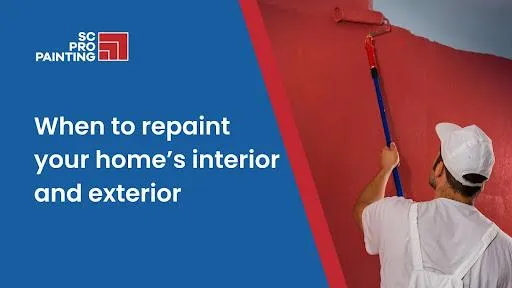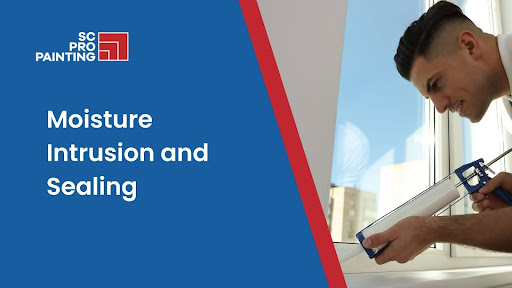PRO PAINTING BLOG
Recent Updates

5 Signs You Must Repaint Your Home’s Interior and Exterior
When to repaint your home’s interior and exterior
Property owners often view painting as a cosmetic chore, a task easily postponed. However, this delay is a financial risk. Paint is not just color; it is the vital, primary defense for the structural integrity of your home’s interior and exterior.
Neglecting this maintenance schedule is a costly error. This definitive guide reveals the clear warning signs that demand immediate attention, protecting your investment and preventing expensive structural failure.
The Cost of Complacency
Paint acts as a sacrificial shield for your most valuable materials: wood, stucco, and drywall. When this shield fails, your maintenance costs quickly multiply.
A simple, timely paint job can cost significantly less than the massive repairs needed for rotted wood or water-damaged plaster. Understanding the recommended repainting timeline for homes is not about aesthetics; it is a critical strategy for financial security. The real cost of painting is the price of neglecting it.
1. The Flashing Red Light
The most undeniable signal that your property requires action is the physical failure of the surface coat. These visible flaws are the paint's urgent alert that its protective life is over.
Exterior Paint Warning Signs
Exterior surfaces face a relentless attack from UV rays, harsh rain, and temperature shifts. Owners must actively inspect for these specific warning signs of structural weakness.
Cracking and Peeling: This is a catastrophic adhesion failure. When paint lifts or cracks, it creates a direct path for moisture to infiltrate the underlying wood or masonry. For wood, this leads quickly to rot; the entire structural integrity of the area is compromised.
Chalking: This white, powdery residue appears when the paint binder breaks down due to sun damage. It signals that the color pigments are no longer secured, and the paint is chemically exhausted, offering no protection to the surface below.
Interior Paint Warning Signs
Interior paint failure is often localized, but it requires swift resolution to prevent expensive damage to drywall and plaster. These issues signal a humidity or water problem.
Flaking Near Moisture Sources: Peeling or bubbling near areas like the kitchen or bathroom ceiling suggests the paint is inadequate for high humidity. This is an open invitation for mildew and requires immediate attention to stop mold growth.
Fading in High-Exposure Areas: Rooms that receive strong, direct sunlight will show noticeable color degradation. This failure of the UV-blocking additives diminishes the visual appeal and signals reduced protection for the home’s interior and exterior.
2. The Asset Protection Strategy
Professional-grade paint has a scientifically determined lifespan. Following the recommended repainting timeline for homes ensures you replace the protective layer before it fails completely.
Exterior Repainting Cycles
The lifespan depends heavily on the material the paint is covering. Using these benchmarks guarantees replacement happens before costly material deterioration begins.
Wood Siding: Requires repainting every 3 to 7 years. Delay guarantees dry rot and expensive wood replacement.
Stucco/Masonry: The cycle is typically 5 to 8 years. Neglect leads to cracking, efflorescence, and deep moisture penetration.
Interior Repainting Cycles
Interior paint lasts longer, but its cycle is determined by foot traffic and functional use, not weather. High-traffic areas always require a swifter timeline.
Kitchens and Bathrooms: Due to high moisture, these functional spaces require repainting every 3 to 4 years with mold-resistant paint.
Hallways and Living Areas: These high-traffic zones accumulate scuffs quickly. Repainting every 5 to 7 years maintains a sharp, clean appearance that supports property market value.
3. The Property Value Multiplier
Real estate professionals confirm that fresh, quality paint provides one of the highest returns on investment (ROI) an owner can execute. The financial leverage here is undeniable.
A professionally painted home’s interior and exterior signals diligent maintenance to potential buyers. This confidence translates directly into higher sales offers and significantly shorter time on the market.
The Psychological Driver: Cleanliness and Care
Buyers are psychologically triggered by cleanliness and perceived care. Dated or damaged paintwork signals neglect, instantly triggering "repair anxiety" that causes buyers to discount their offers significantly. Repainting eliminates this emotional barrier and drives a higher closing price.
4. Moisture Intrusion and Sealing

The most significant danger occurs when the exterior paint cracks, allowing water to penetrate. The recommended repainting timeline for homes is designed to prevent this exact failure.
Once water enters, it is drawn into the wood structure, causing it to swell and rot. This structural damage is completely preventable through timely maintenance and proper sealing.
Actionable Strategy: Sealing and Preparation
An expert painter dedicates 80% of the time to preparation. This is where long-term value is locked in for your home’s interior and exterior.
Sealing: All failing caulk and hairline cracks around windows, doors, and seams must be meticulously sealed with flexible sealant before painting begins.
The Double Barrier: The new coat of paint then acts as a crucial second, unified moisture barrier. This detailed preparation is the difference between an expensive structural repair down the road and a simple, preventative repaint now.
5. The Color Currency
Color trends influence a property’s perceived value. While the structural need to repaint the home’s interior and exterior is essential, color provides a powerful financial and emotional tool.
The Selling Strategy
If a property is destined for the market, personalized or outdated colors must be neutralized. Modern, neutral palettes (e.g., specific shades of white, gray, or taupe) broaden buyer appeal and maximize your profit potential. This update often delivers a tenfold return on the cost of the paint job itself.
The Staying Strategy
For owners planning to remain, repainting is an investment in well-being. Fresh, modern colors have a profound, scientifically recognized positive impact on mood, comfort, and the overall quality of life in your home’s interior and exterior.
Conclusion
Delaying maintenance is not saving money; it is borrowing risk at a crippling interest rate. The visible deterioration of your home’s interior and exterior is a clear signal, an urgent invitation to costly, structural intervention.
The financial and physical risks associated with failing to adhere to the recommended repainting timeline for homes are too significant to ignore. Act decisively now to secure the value, integrity, and future sale price of your property.
DO NOT RISK STRUCTURAL DAMAGE: Get the authoritative assessment of your property’s condition and secure your maintenance schedule today. Claim Your Free, No-Obligation Paint Analysis Now.
WELCOME
Welcome to our site! We are in the process of building our blog page and will have many interesting articles to share in the coming months. Please stay tuned to this page for information to come. And if you have any questions about our business or want to reach out to us, we would love for you to stop by our contact page.
Thank you!
Home | Get a Quote | Privacy Policy | Contact
©2023 Sioux City Pro Painting - All rights reserved
Created by Showcase 712
